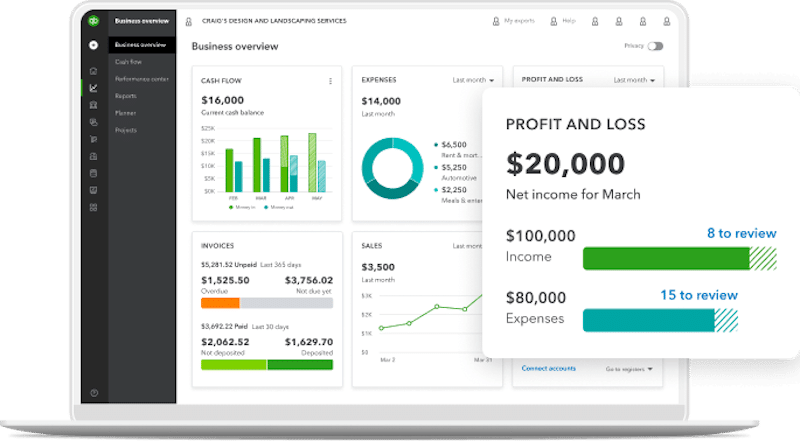

A business plan for artists is an essential tool in developing a successful creative business. It can guide financial, marketing, and operational decisions, provide a concrete way to track the success of these decisions, and communicate future plans to partners or investors. After all, the art industry is very competitive, whether you are a fine artist trying to sell your work or a commercial artist juggling freelance projects. Being a self-employed business owner is very liberating, but with nobody to report to or looking over your shoulder, it is tempting to follow your gut instead of preparing and implementing a structured plan.
A business plan can help focus your efforts, clarify your business model, help you to understand your market better, provide realistic goals, and measure your success. It can even help you determine the most effective pricing for your artwork or services. It can be used for a new business or to expand, change, or develop a new aspect of a current business. It can also help you secure funding or partnerships since a business plan shows the stakeholders that you have a clear vision for your business and a plan to achieve it.
It will also help you understand every aspect of your business so that when problems or opportunities arise, you can make quick, thoughtful, and advantageous decisions.
Throughout the planning process, you will analyze all aspects of your business, from marketing and human resources to financial management and planning. Once the business plan is complete, you will have a projected financial picture and understand your potential for success. If the plan shows a high potential for success, that’s great! You can start developing your launch plans.
But if your plan shows that the potential profitability makes launching the business a bit risky, don’t worry. You will have learned so much about your business and market opportunities that you should be able to make adjustments to increase profitability and make the business more viable. .
For example, you may discover that your recurring expenses are too high, leaving you without adequate financial resources for marketing, resulting in a decreased potential for sales. One of your highest expenses is the rent for your studio. You realize that running the business out of your home would significantly reduce your expenses while increasing profitability and cash flow, thus making the financial picture more attractive.
However, you may also discover that no matter how you revise your plan, the business is too risky, with the necessary sales needed to make a profit just too high. That’s ok — not every business idea can be successful. It is better to walk away than develop a losing venture.
A business plan is comprehensive, and while it does take effort and time to create, it’s worth it. Think of it as a roadmap to learning everything there is to know about your business and the industry environment that surrounds it, ensuring that you embark on a venture that will be profitable and successful.

A business plan can help ensure you sell all of your inventory.
A comprehensive business plan for artists typically includes the following sections:
Things rarely go as planned in business, and every day presents new and unique challenges. The more you understand your business, the easier it will be to take advantage of any opportunities and mitigate any problems, whether internal (under your control) or external (out of your control).
The intricate details of creating a business plan are too extensive to delve into here. Plenty of resources and software applications on the web can guide you. Check out this article on the B est Business Plan Software to get you started. However, these software packages are geared toward all businesses and not to creative businesses specifically, so you may also want to take a look at the Skillshare course on “ Crafting a Business Plan for Artists ” for tips and insights into planning a creative business.
However, there are several things that you can do before you begin crafting the plan that may make the development process a bit easier and more effective.
Start by establishing an annual spending plan. This involves creating and maintaining a cash flow analysis to identify income and expenses clearly. The cash flow analysis describes the sources of a company’s cash and demonstrates how that cash is used over a specified time period. It is one of the most critical components of a business’s financial health.
Then create an estimated budget, focusing on more significant expense categories first. This process will be straightforward if you track your income and expenses in a spreadsheet, an accounting app like Quickbooks or Xero , or a budgeting app like Mint or Rocket Money . You can also find templates online with common expense categories.

Accounting software like Quickbooks can help you develop your annual spending plan.
Next, envision your ideal spending or growth plan. Consider what you would need to start or expand your business – perhaps hiring a part-time assistant, outsourcing your social media management, or renting a bigger art studio. How much money would you need to make in the next year or 5 to 10 years, to achieve these goals? Visualizing these numbers can make your choices more tangible.
See also Unleashing the Inspiring Power of Corporate Art for Workplace WellbeingIdentify your income sources, both existing and potential. Conduct some market research – are the prices you charge for your artwork or design services comparable to other artists in your field?
If you’re not currently earning money from your art business but plan to develop a full-time business, consider your salary from your day job. Also, consider when you would be due for a raise. For a part-time business, decide how much extra you would need, given the time you intend to allocate.
Finally, choose a few primary goals or projects for each quarter of the year that you believe will expand your practice or business. These might align directly with your income goals or be geared towards making you feel more supported in your practice. Prioritize these goals based on what will serve you personally and professionally best.
By meticulously sketching out your spending plan, you’re not just organizing your financial life – you’re laying the groundwork for a robust business plan. This detailed financial blueprint will make the task of developing the financial section of your business plan significantly easier.
You’ll clearly understand your income, expenses, growth plans, and financial goals. This allows you to present a realistic and compelling financial projection in your business plan that reflects your unique artistic journey and ambitions.

Understanding the journey of successful artists can help shape your business own strategies.
It’s important to remember that even among renowned artists, the journey to success is rarely linear: every business experiences many ups and downs that can be difficult and feel demoralizing. But understanding the story behind other artists’ popularity and success can provide comfort and inspiration when encountering these barriers.
Choose a few artists you admire, whether they’re living or historical figures. Learn all that you can about them, paying particular attention to the moments before their “launch”: the chance encounters or day jobs that ended up opening doors for them. Consider these people as your mentors and learn from their examples.
By immersing yourself in the stories of artists you admire, you’re not just seeking inspiration – you’re gathering valuable insights that can inform your own artistic journey. These insights can be particularly useful when crafting your business plan.
Understanding the challenges and opportunities that other artists have encountered can help you anticipate similar scenarios in your own career. It can inform your analysis, shape your marketing and sales strategies, and even influence your financial projections.
Remember, every artist’s journey is unique, but you can confidently and clearly navigate your journey by learning from those who have walked the path before you.
A SWOT Analysis is a powerful tool that can inform your business plan. SWOT, which stands for Strengths, Weaknesses, Opportunities, and Threats, is a technique businesses use to discover new opportunities and eliminate potential threats. Just like an annual checkup is meant to maintain your body’s overall health, a periodic inventory of your art business helps you track the status of your finances.
Once you’ve created your SWOT, you can develop strategies to leverage your strengths, address your weaknesses, capitalize on opportunities, and mitigate threats.
Remember, a SWOT analysis aims to help you make better decisions and develop a strategic plan. It’s not just about listing points under each category but about understanding how these points interact and how you can take action based on them. It’s a living document, so it is critical that you update your SWOT analysis regularly and monitor the effectiveness of any strategies you implement.

An Example SWOT analysis.
Consider a hypothetical artist named Alex, who specializes in creating large-scale murals. Here’s how a SWOT analysis might look for Alex:
From this SWOT analysis, Alex can derive several strategies for his financial planning. For instance, to address his weakness of limited income streams and the opportunity for art workshops, Alex could offer paid workshops to diversify his income.
To mitigate the threat of market saturation, Alex could focus on strengthening his unique style and improving his online presence to reach a wider audience. Ultimately, Alex can make more informed decisions about his financial future by understanding his strengths, weaknesses, opportunities, and threats.
After conducting a SWOT analysis, you’ll likely have a long list of potential strategies you could implement. And while prioritizing these strategies can be challenging, it’s an essential step in crafting a business plan for artists.
One way to prioritize strategies is to assign scores based on their potential impact on your business and the resources required to implement them. We must consider three primary factors to assess strengths and weaknesses:
The evaluation of opportunities and threats differs slightly:
As an artist, you might wonder why you should bother with something like a SWOT analysis to prepare for creating your business plan for artists. After all, your primary passion is to create, not crunch numbers or analyze market trends. But here’s the thing – understanding your SWOT is not just a business exercise: it’s a powerful tool that can help you navigate the unpredictable waters of the art world.
Firstly, a SWOT analysis allows you to take a step back and look at your art career from a broader perspective. Getting caught up in the day-to-day tasks of creating and promoting your art is easy. But when you conduct a SWOT analysis, you must think about long-term strategies. You’ll identify what you’re good at (strengths), where you could improve (weaknesses), where there are potential opportunities for growth (opportunities), and what obstacles stand in your way (threats). This holistic view will help you make more informed decisions about your career.
Secondly, a SWOT analysis can help you stand out in a crowded art market. You can differentiate yourself from other artists by identifying your unique strengths and opportunities. Maybe you have a unique style that appeals to a certain demographic, or perhaps you have strong connections in the local art community that you can leverage. On the flip side, by recognizing your weaknesses and threats, you can take proactive steps to address them. This could mean taking a course to improve your technical skills or diversifying your income streams to protect against market downturns.
A SWOT analysis is more than just a business exercise: it’s a strategic tool to help you build a sustainable and successful art career. So, take the time to conduct a SWOT analysis. It might be the most important thing you do for your art business.

Click to see a Business Model Canvas on Canva
While SWOT analysis is a versatile and widely-used tool, other methods exist that artists might find beneficial, depending on their specific needs and circumstances. Here are a few alternatives:
Each method has its strengths and can be used in conjunction with a SWOT analysis or as an alternative, depending on the artist’s specific needs and circumstances. It’s also worth noting that these methods are not exclusive to traditional businesses – artists and creatives can benefit from strategic thinking and planning.
Crafting a business plan for artists is not just about crunching numbers or conducting analyses. It’s about understanding and leveraging your unique position to create a sustainable and successful art business, aligning your passion for art with the realities of the market, and finding ways to thrive.
Whether you’re just starting out or looking to take your art business to the next level, a business plan is a powerful tool that can guide your journey. It can help you navigate the financial landscape, make informed decisions, and ultimately achieve your goals as an artist.
Remember, an artist’s journey is a marathon, not a sprint. It’s about continuous learning, adaptation, and growth. So, take the time to craft your business plan, understand your strengths and weaknesses, explore opportunities, and mitigate threats. Your time and effort in crafting a business plan today can pay off tenfold in the future.
As a photographer and Patent Attorney with a background in marketing, Steve has a unique perspective on art, law, and business. He is currently serving as the Chief Product Officer at Artrepreneur. You can find his photography at artrepreneur.com or through Fremin Gallery in NYC.
 I’m a freelance creative. Here’s how I sketch out my time management matrix.
I’m a freelance creative. Here’s how I sketch out my time management matrix. Sharing an art studio: is it right for you?
Sharing an art studio: is it right for you?